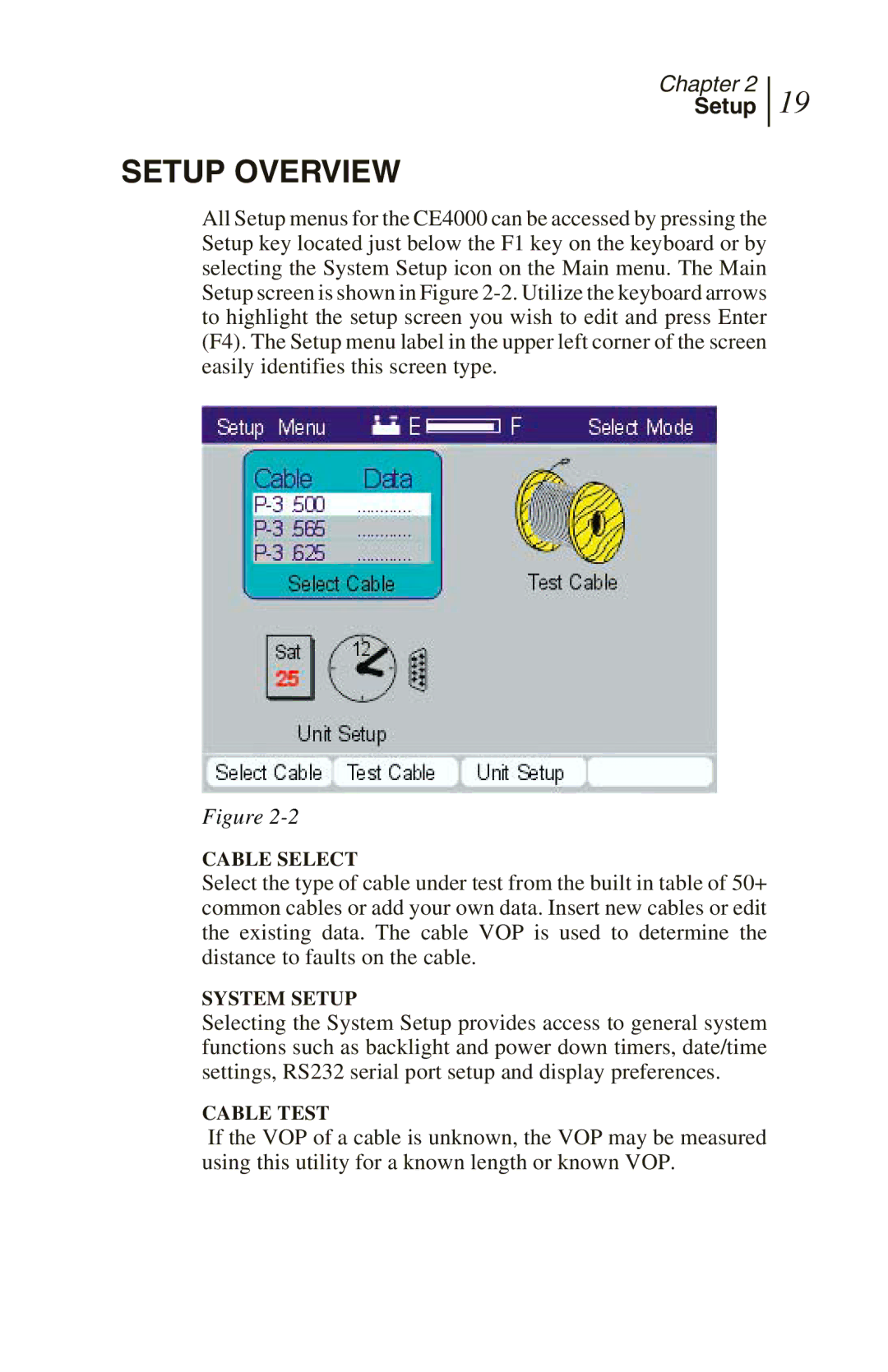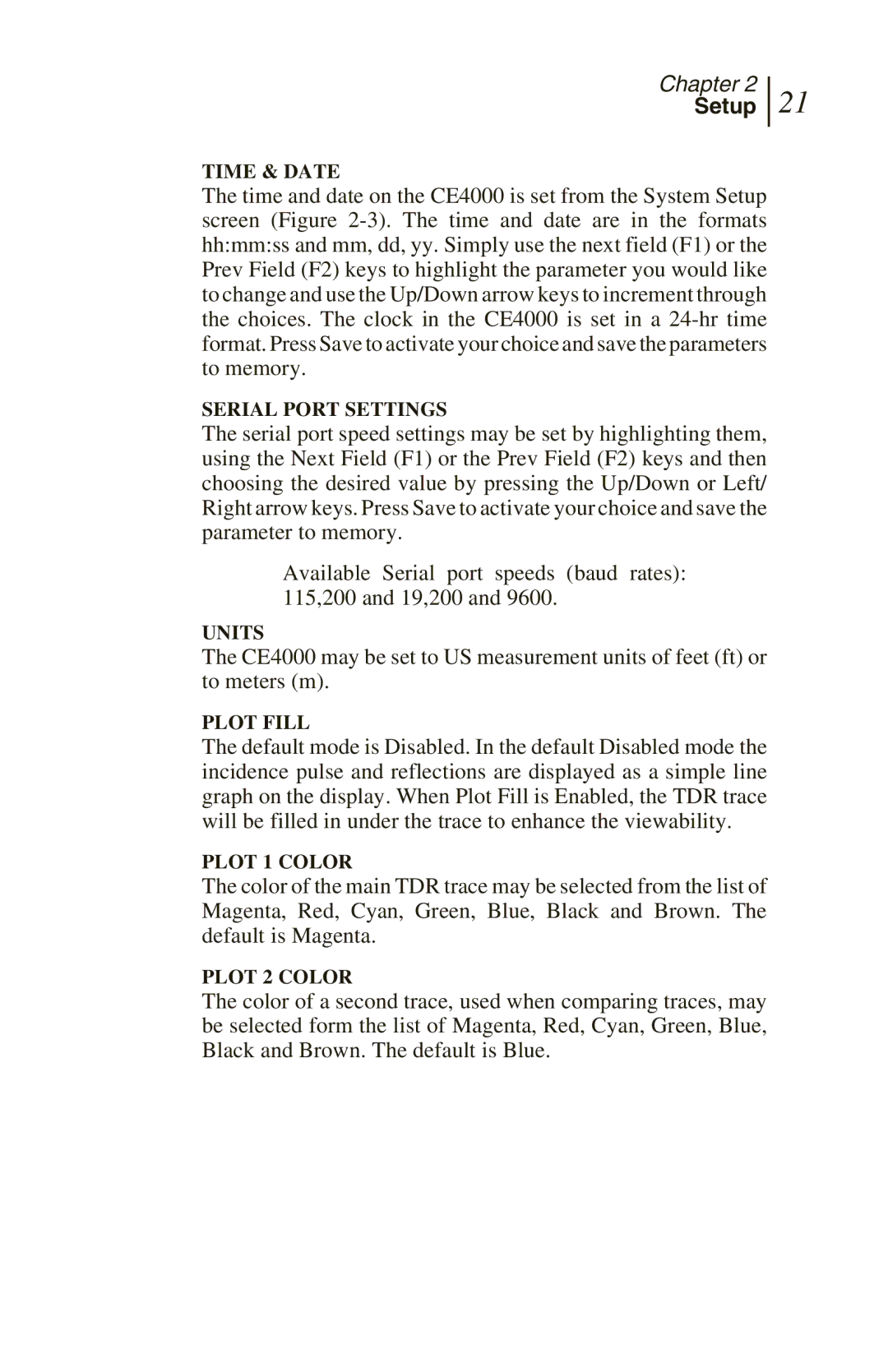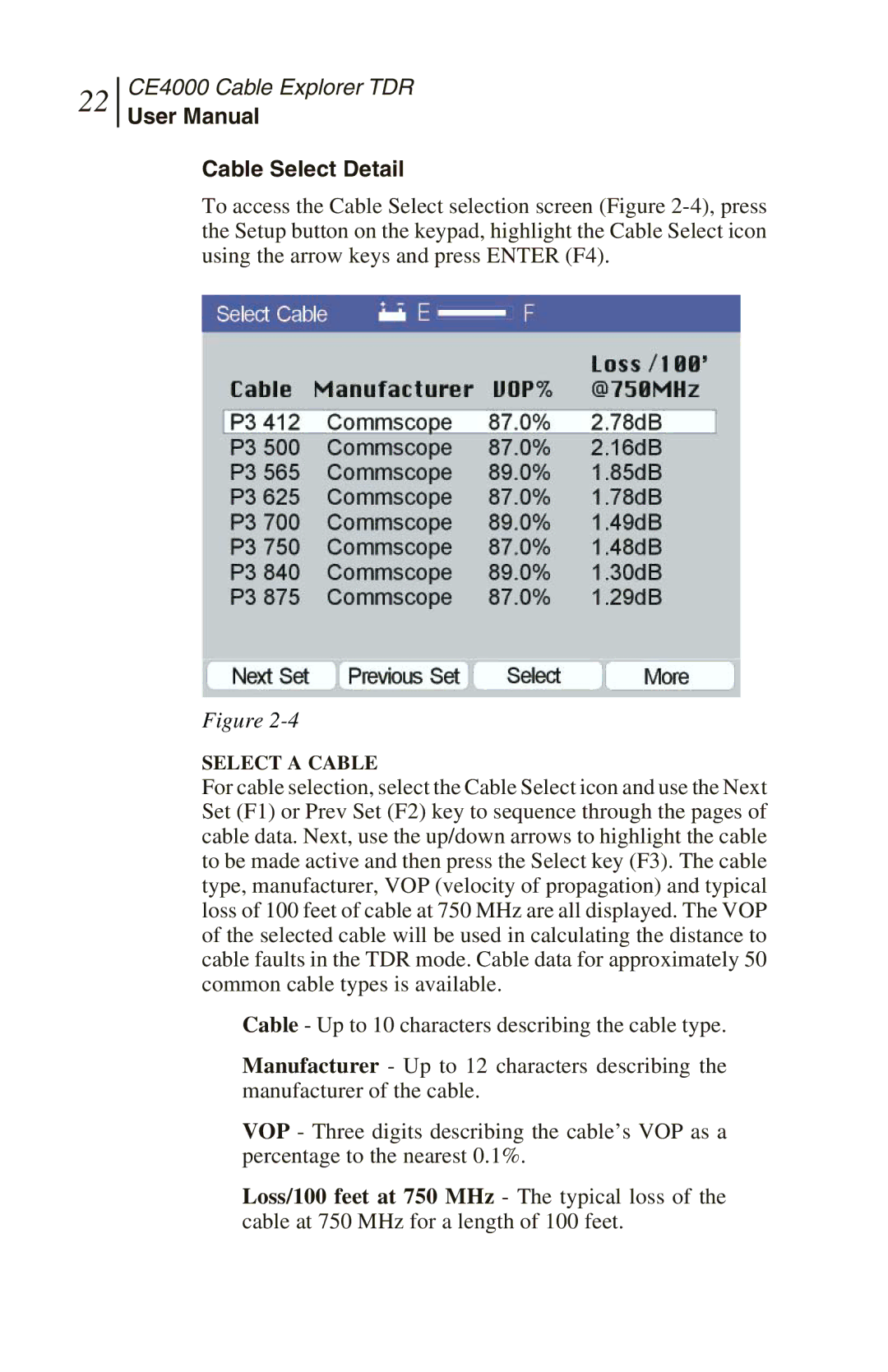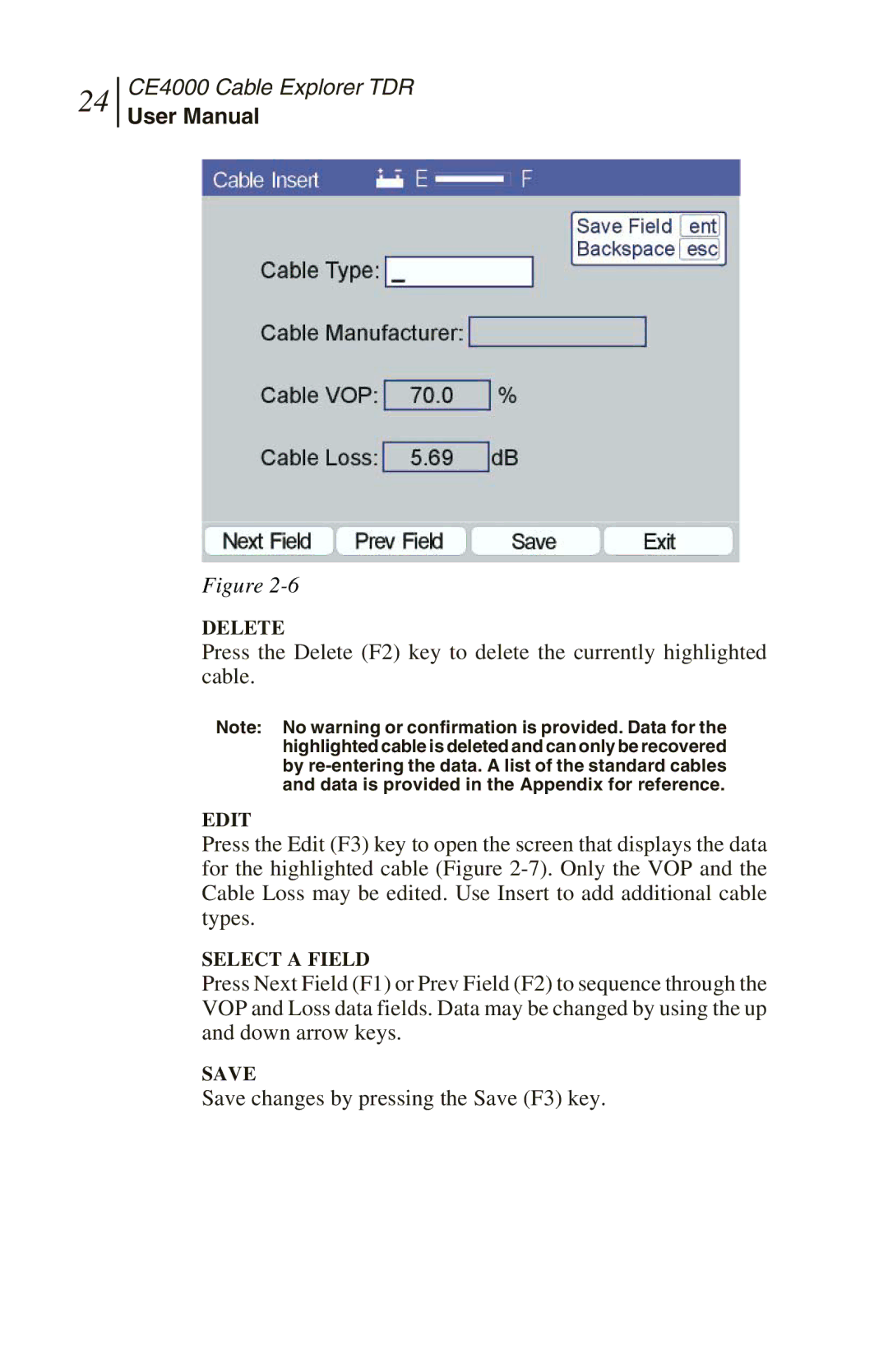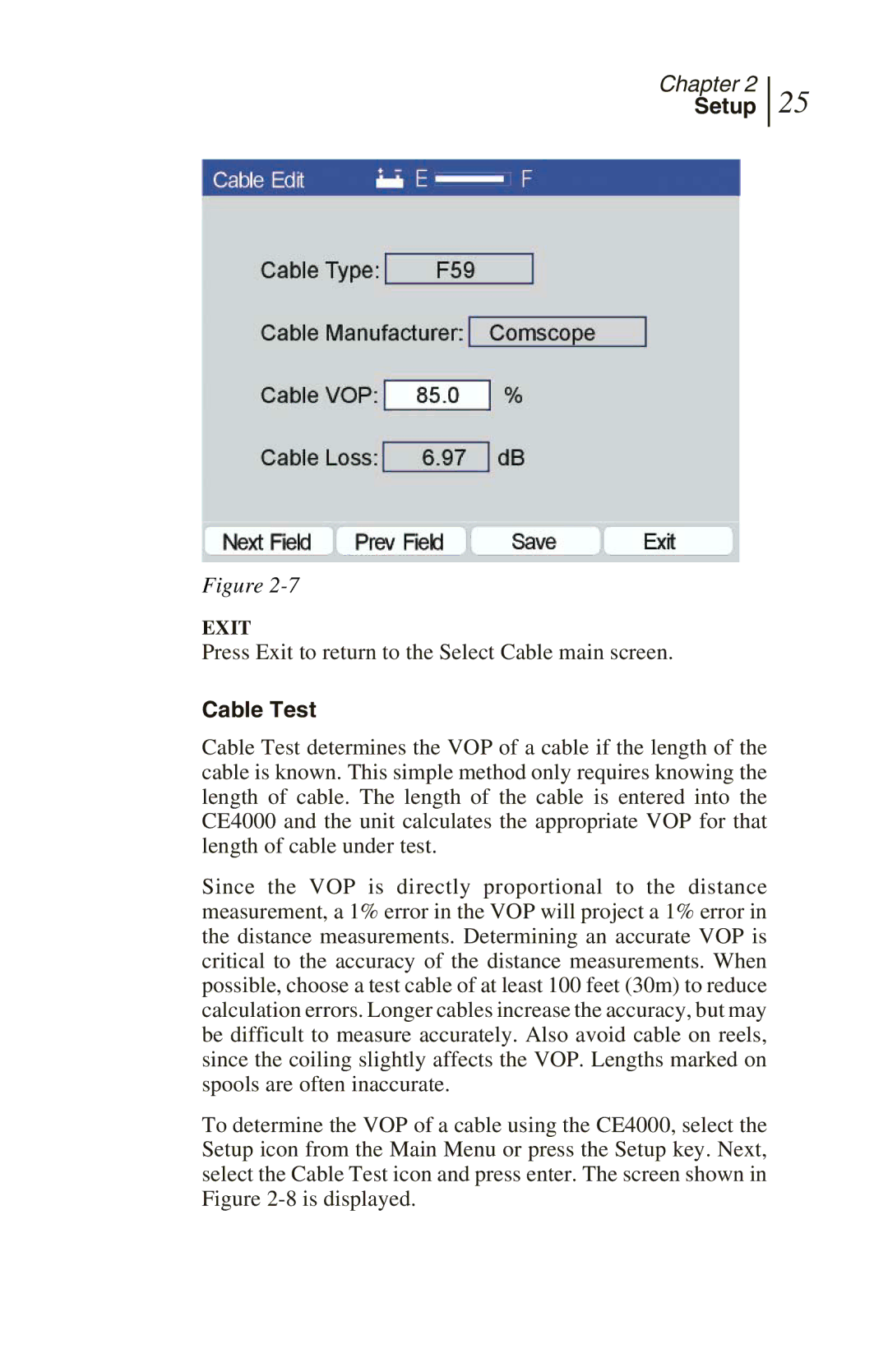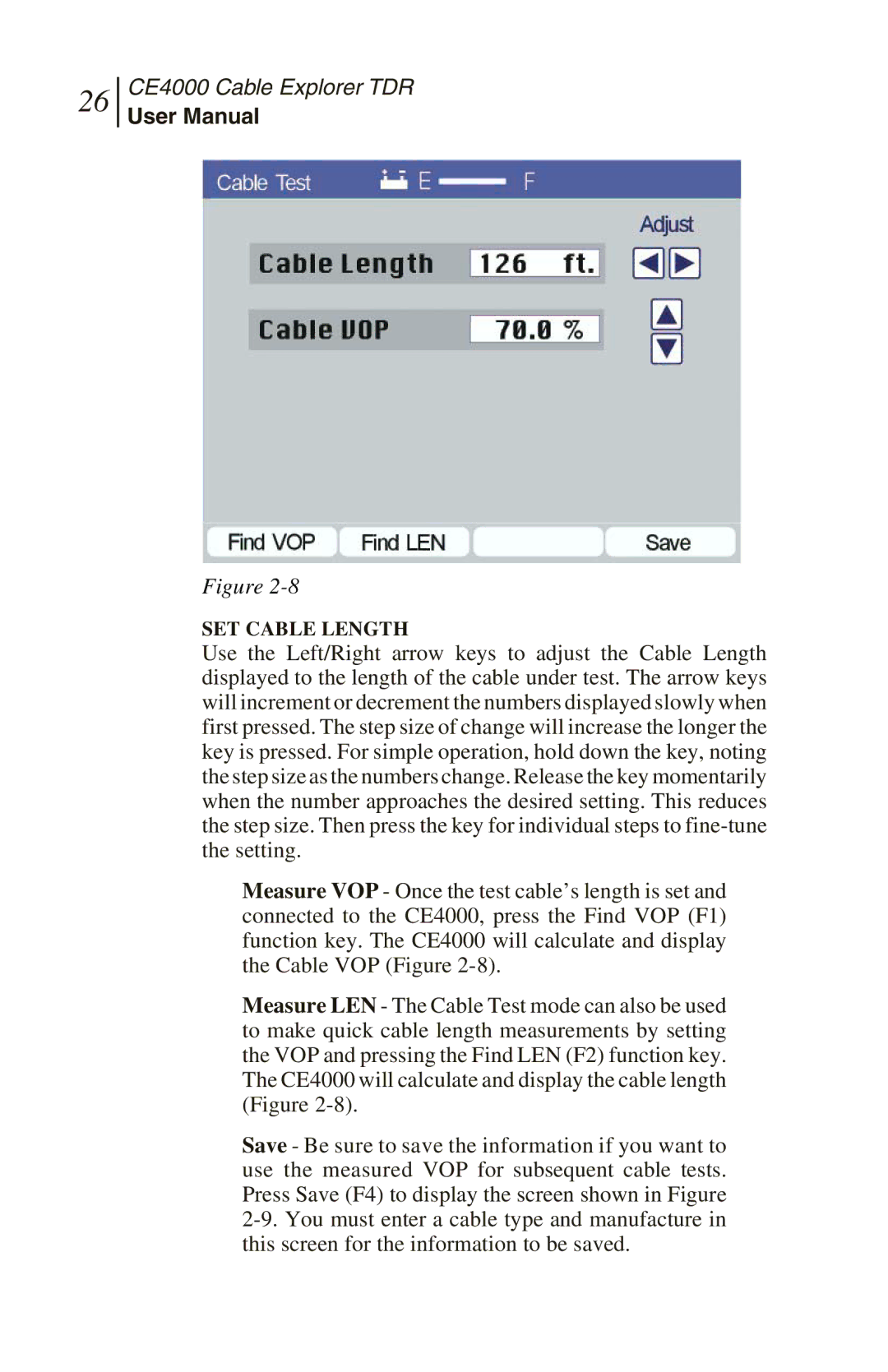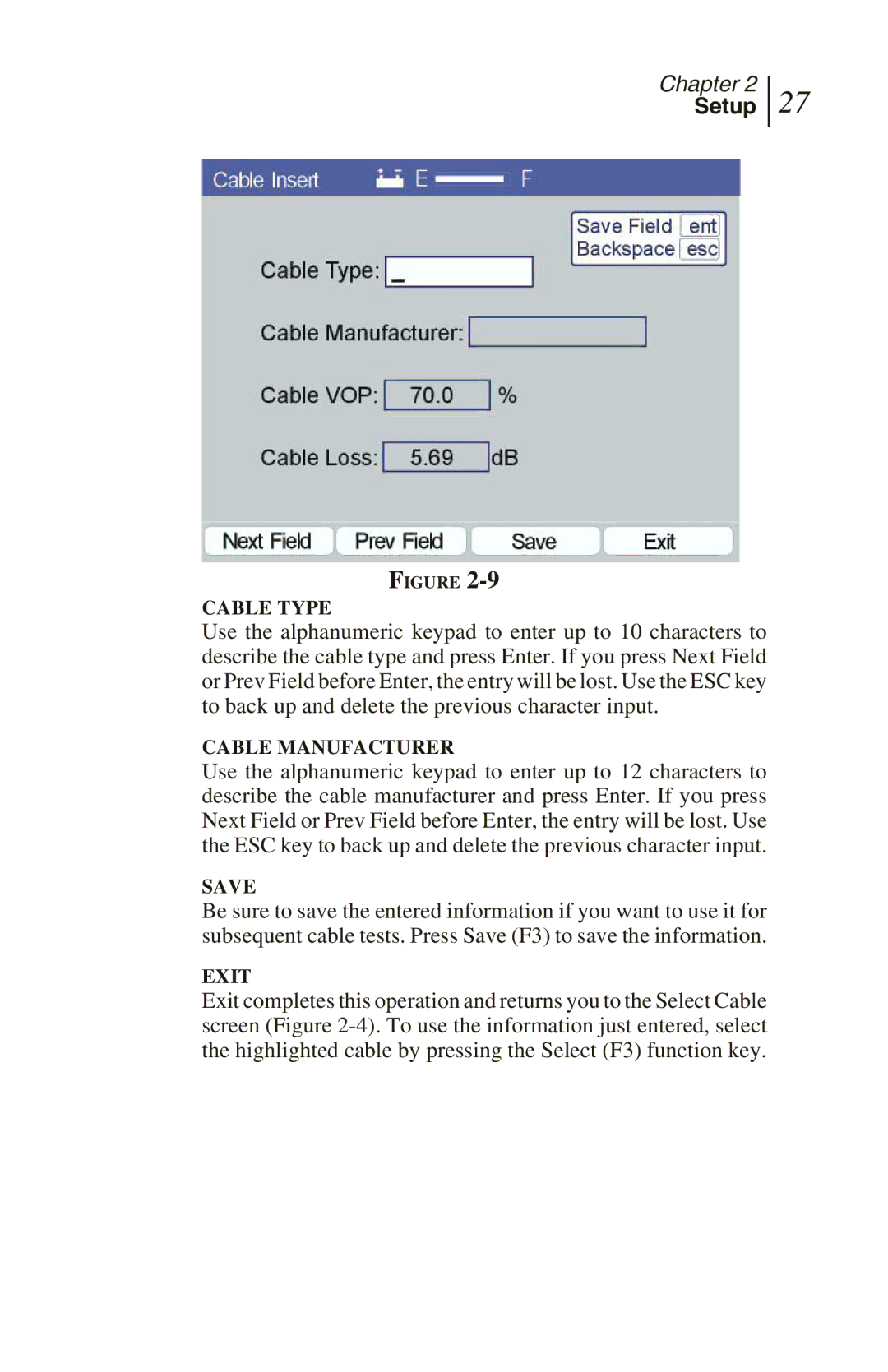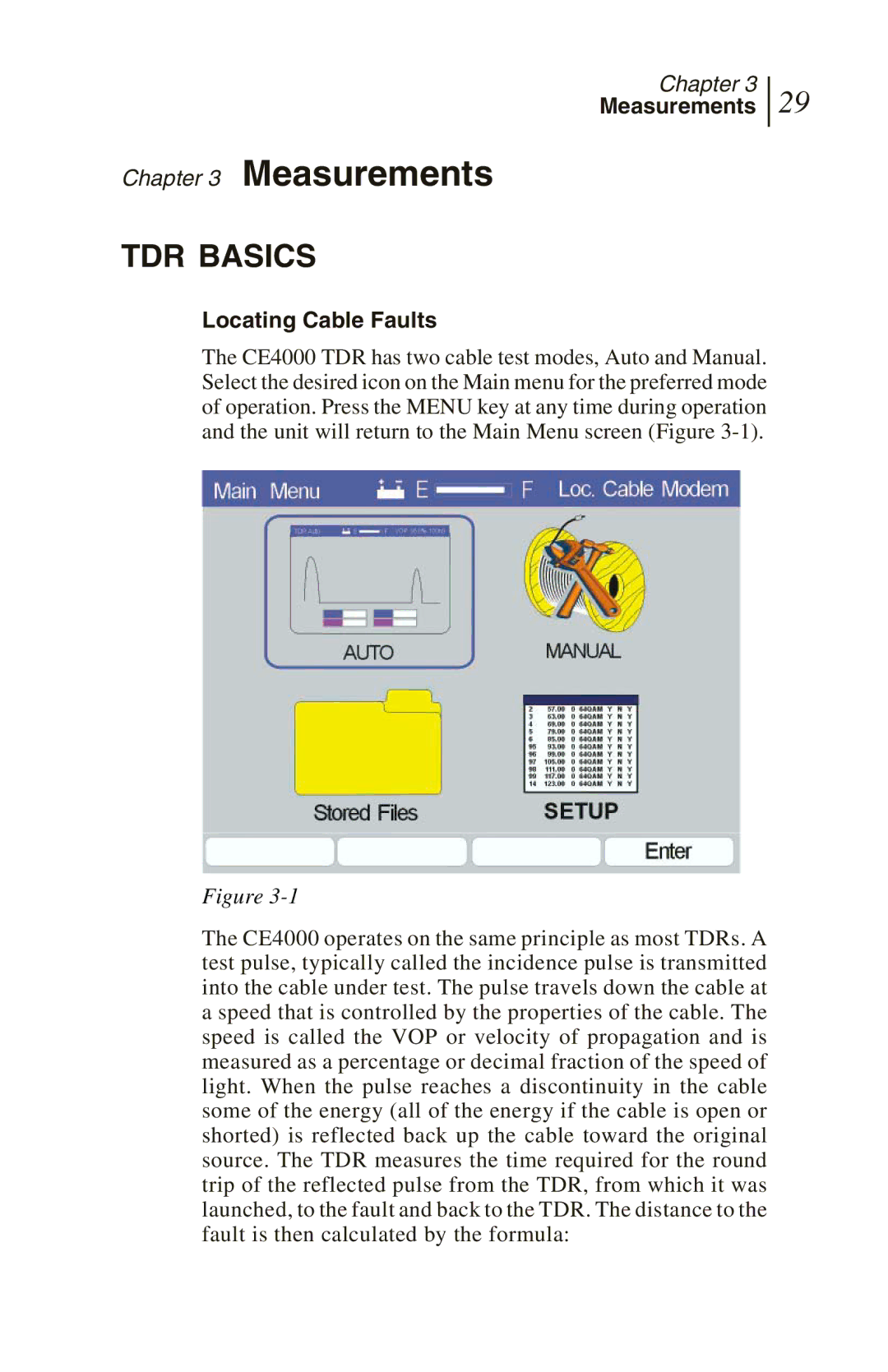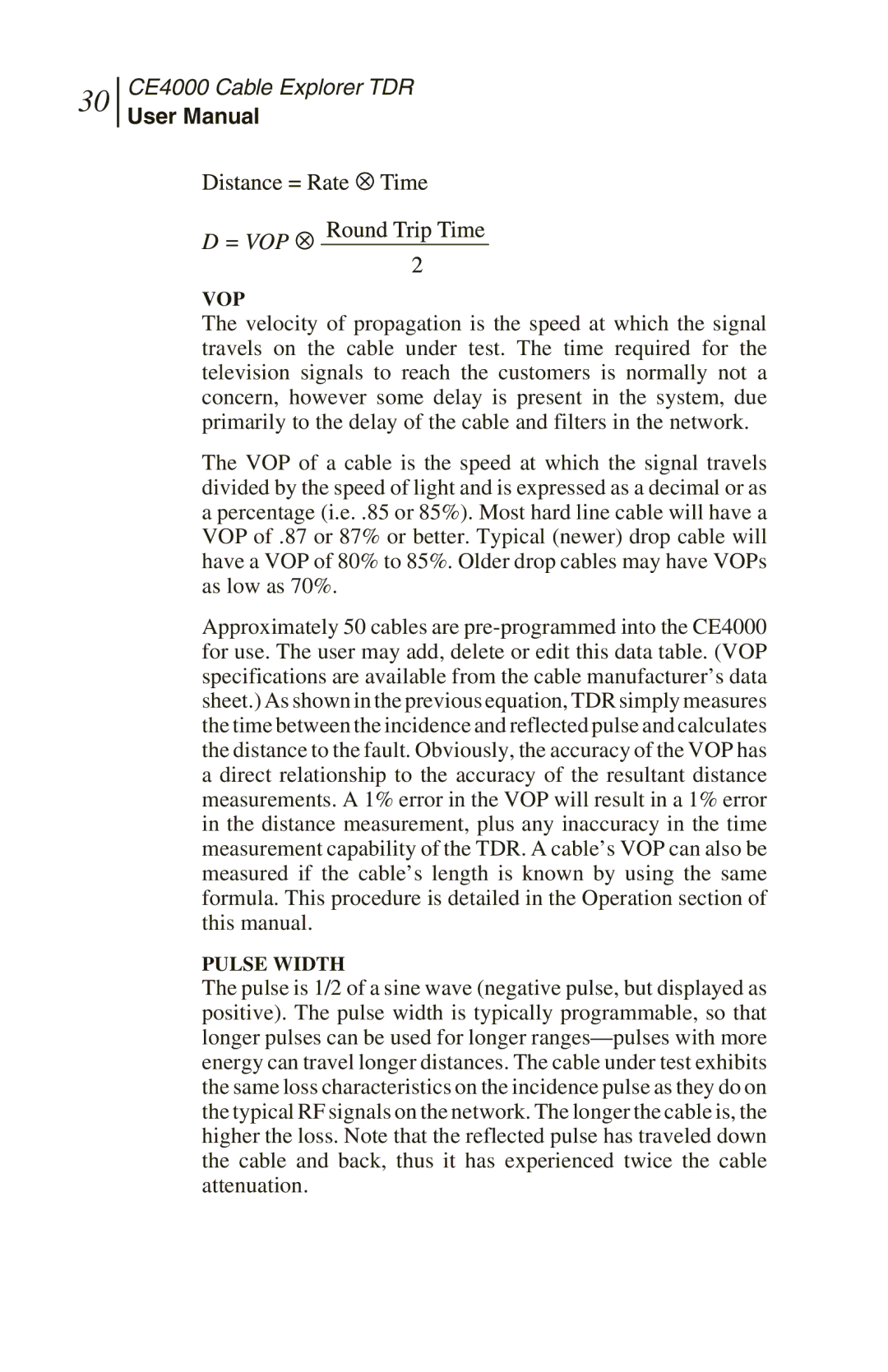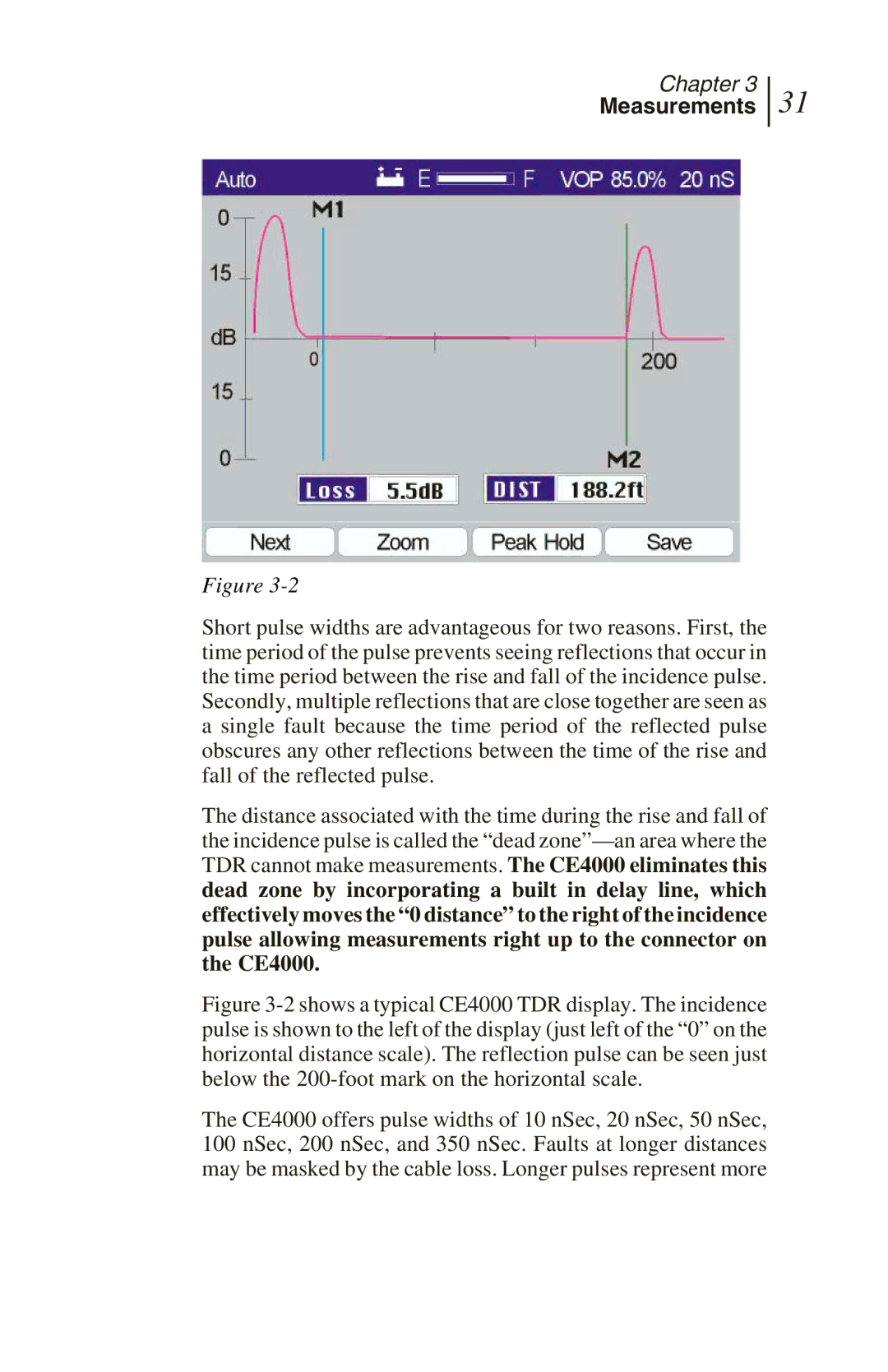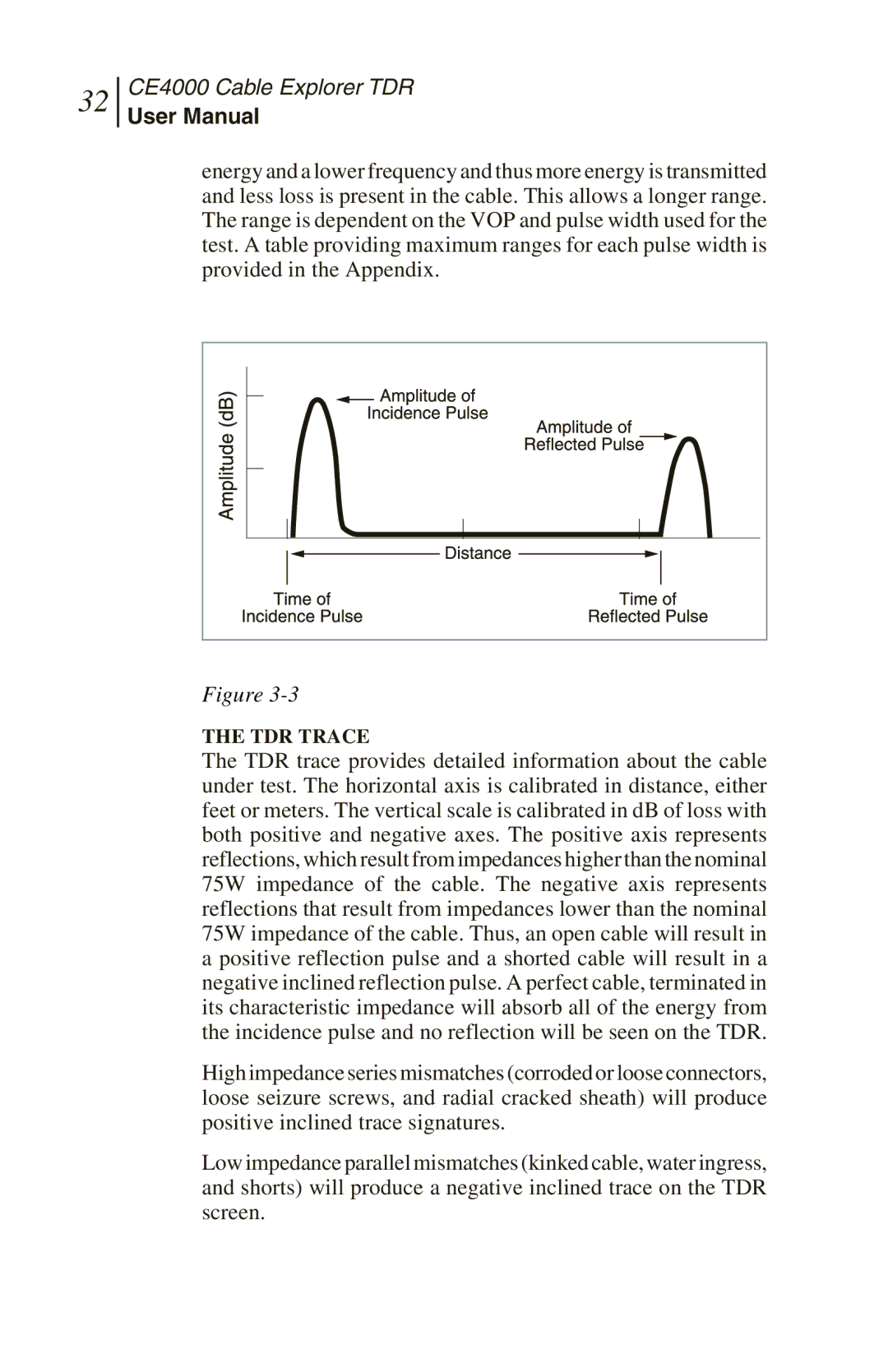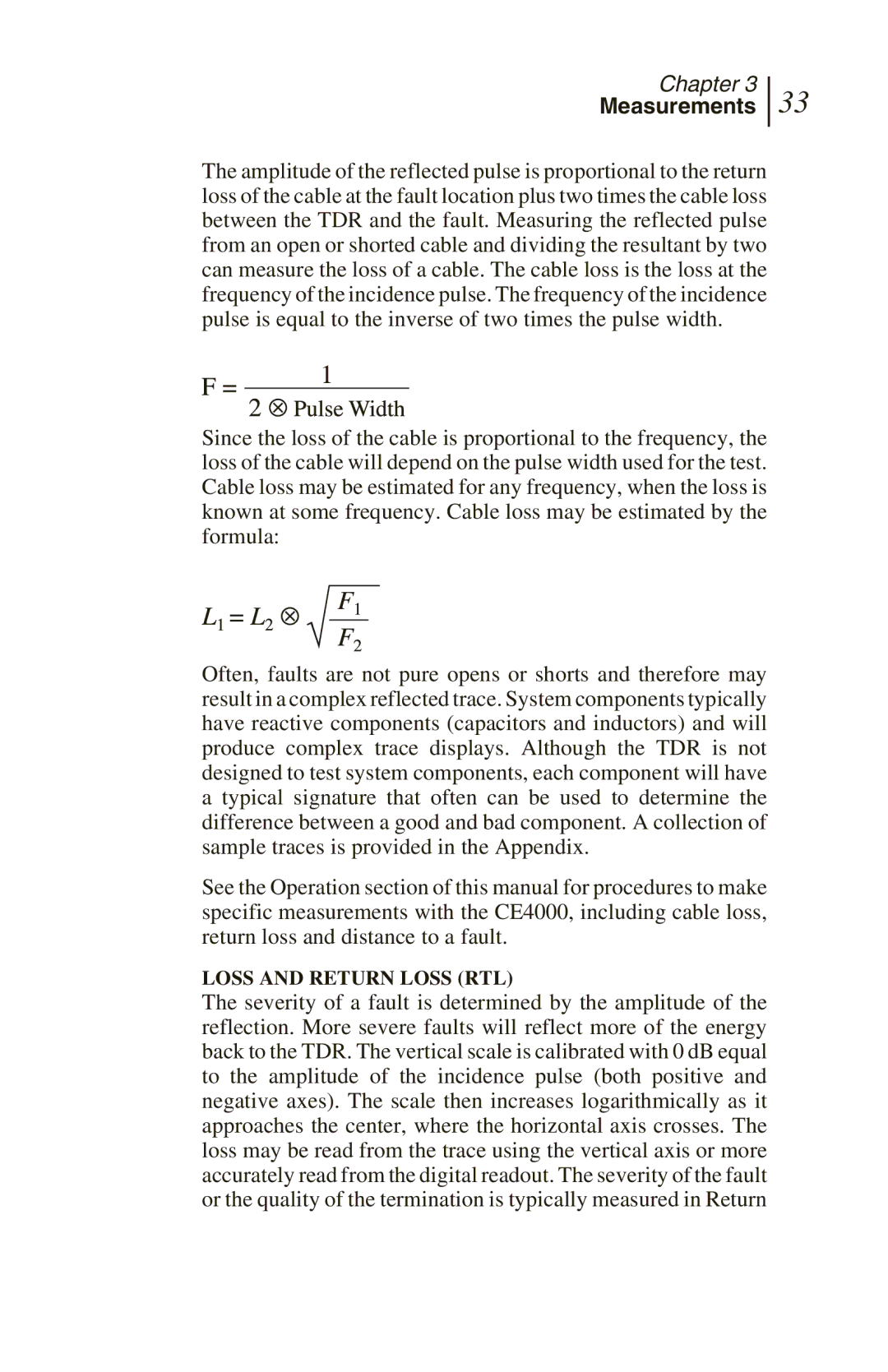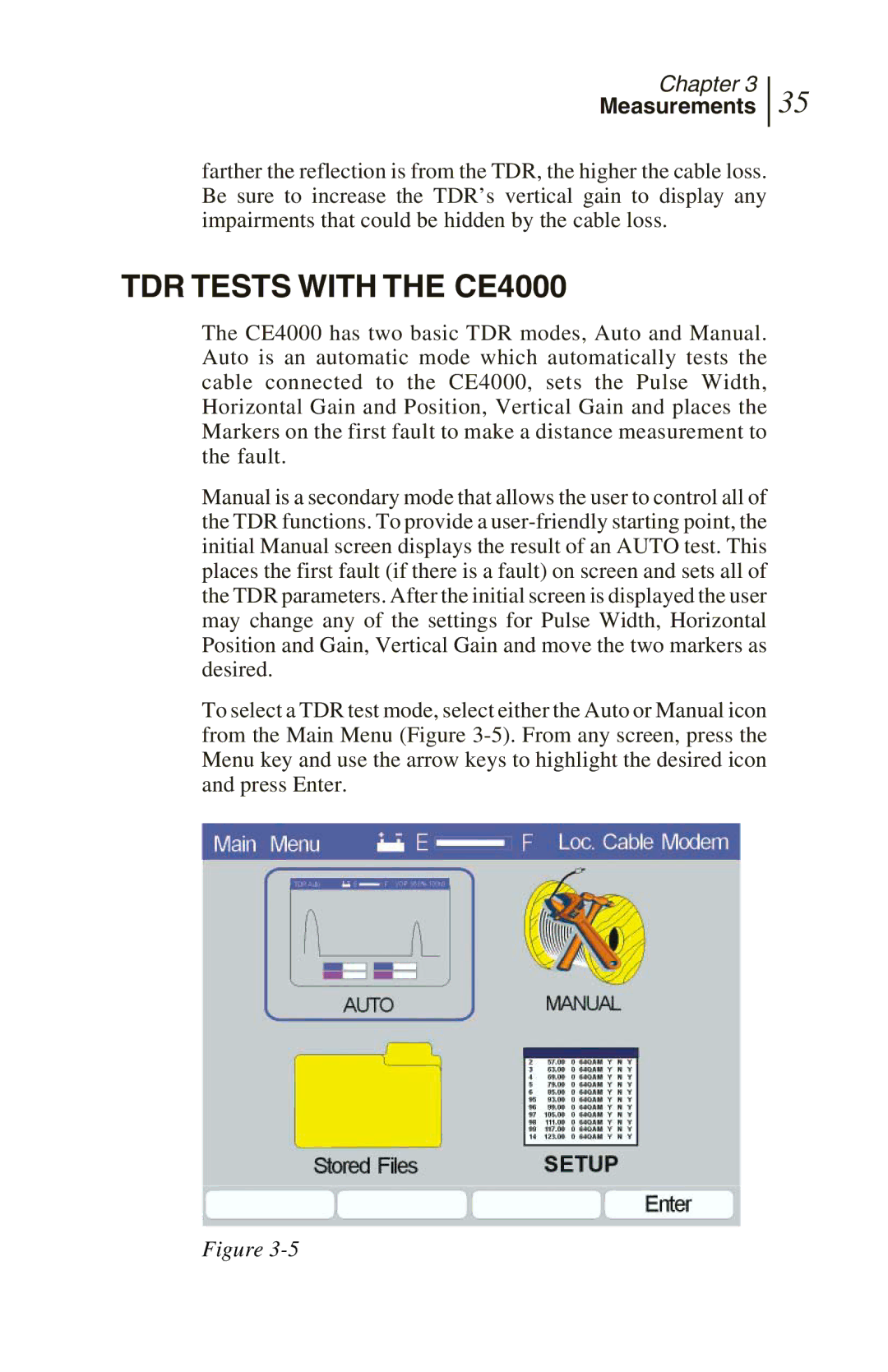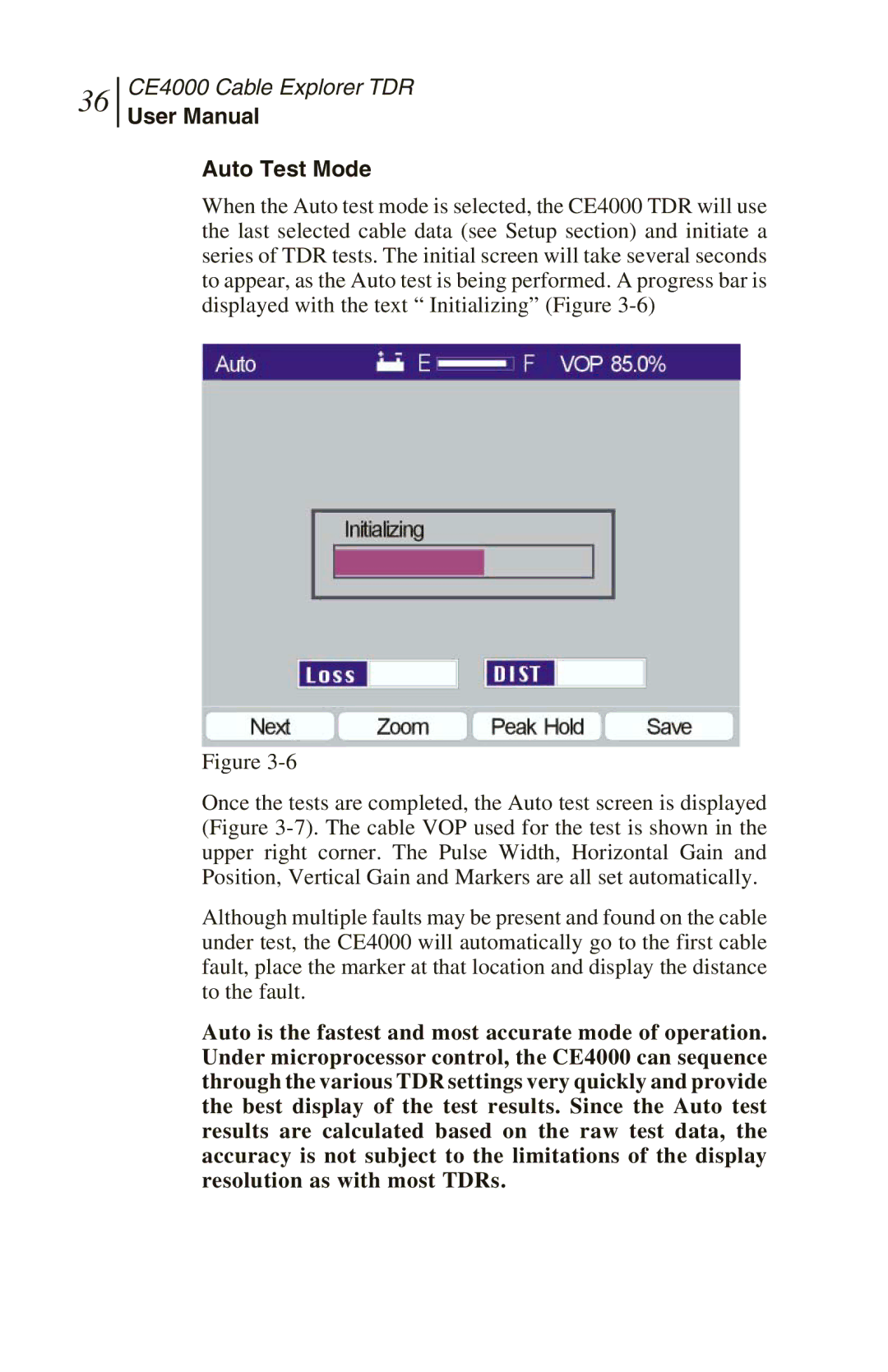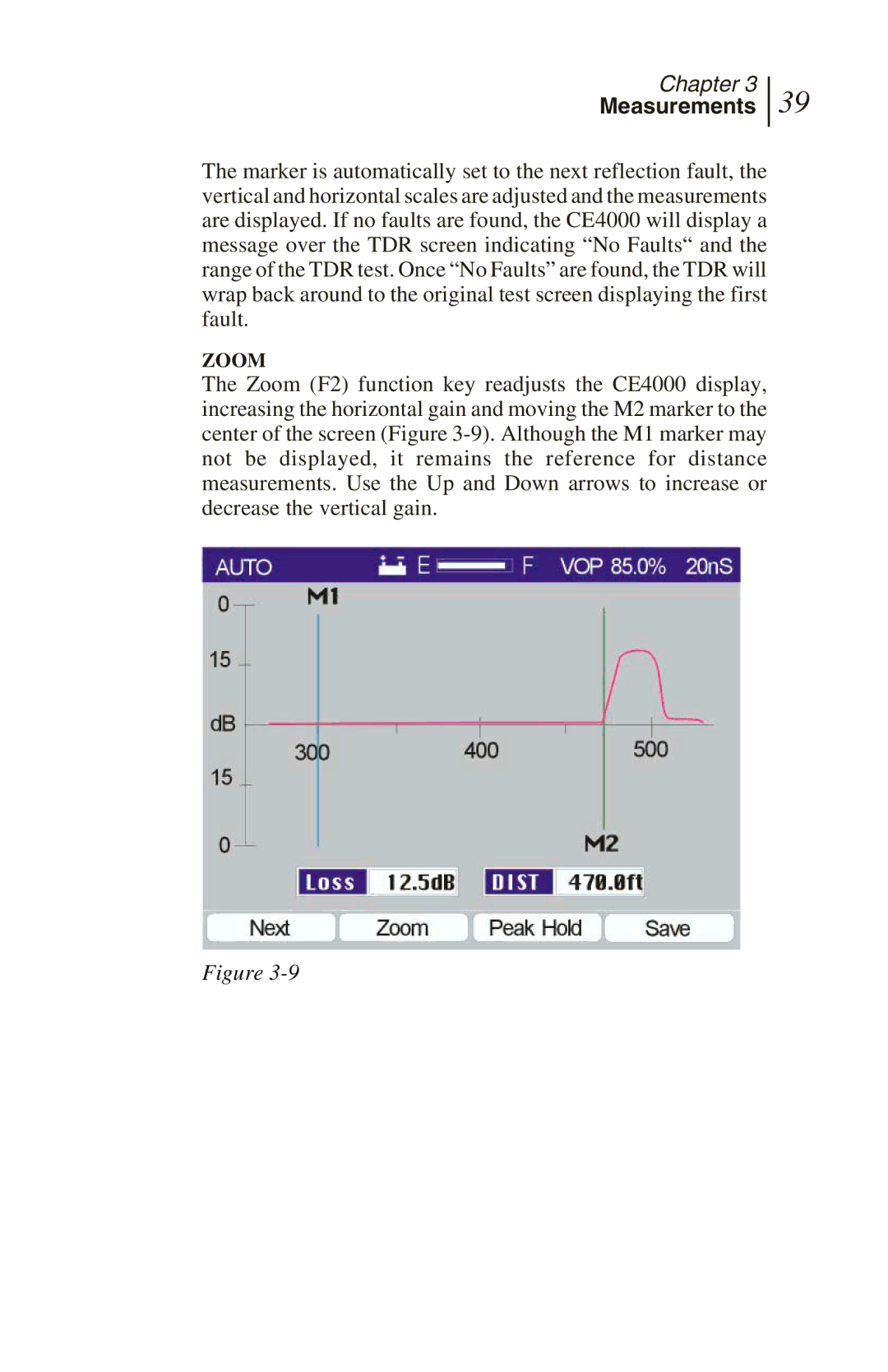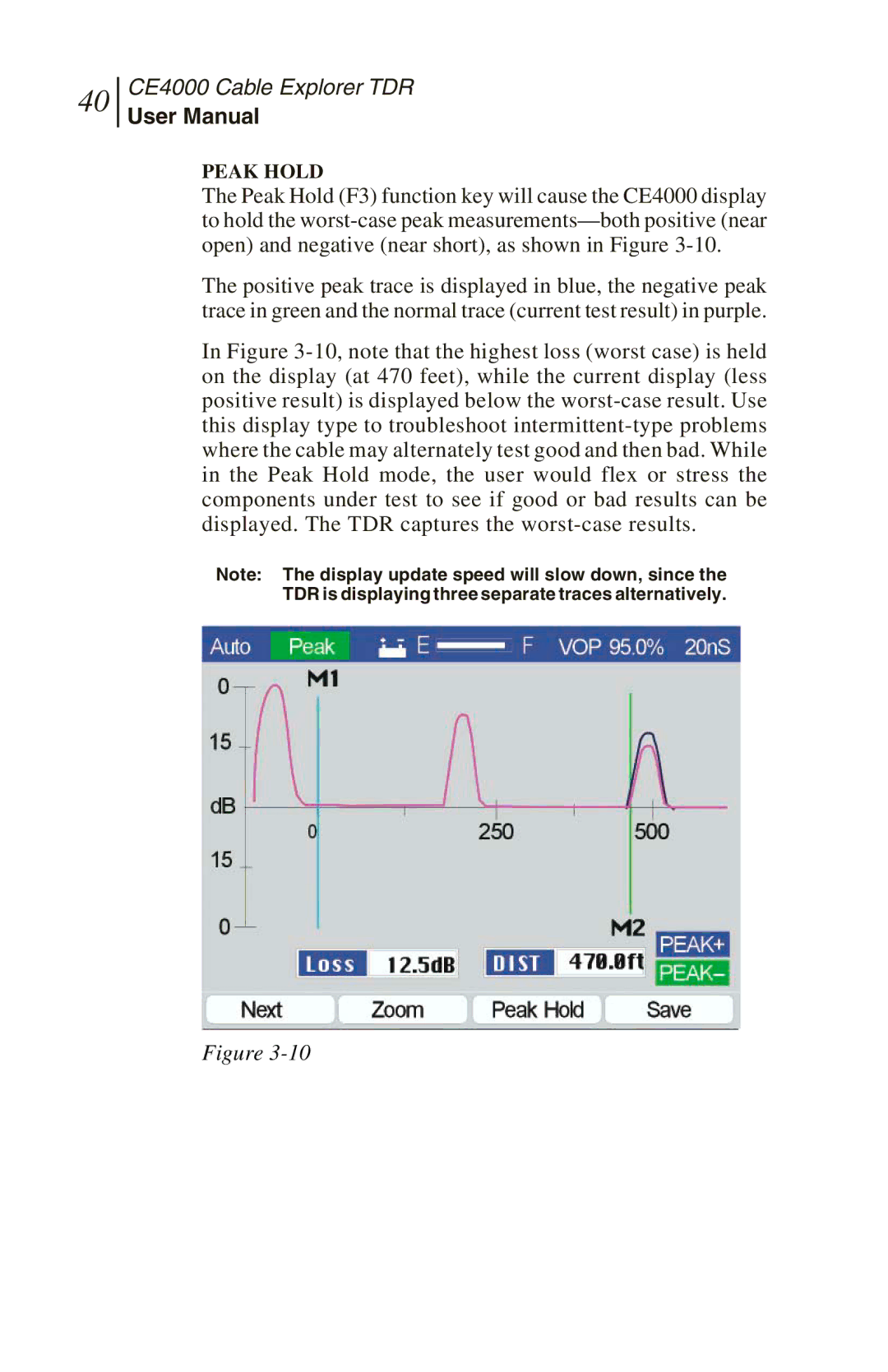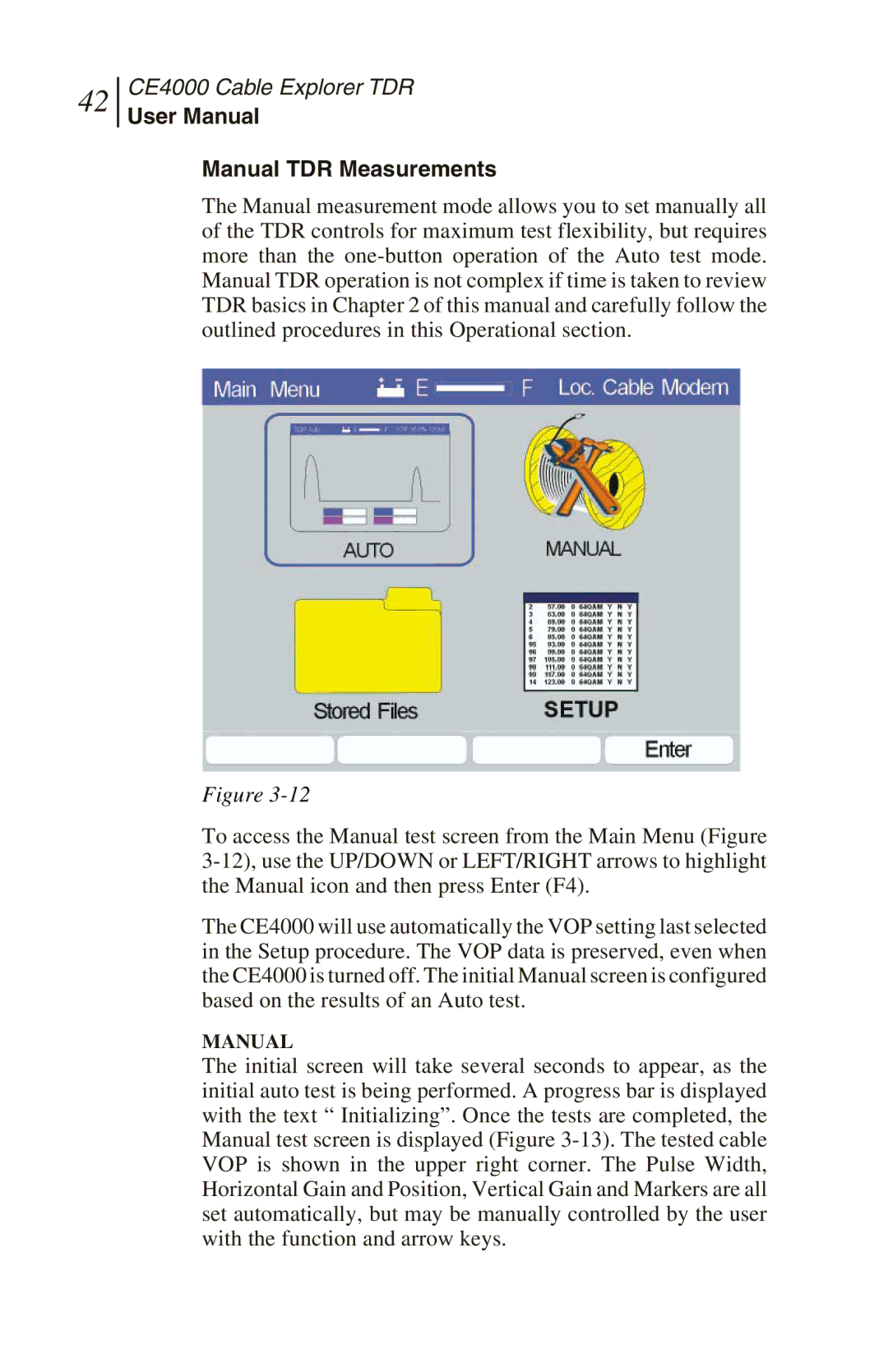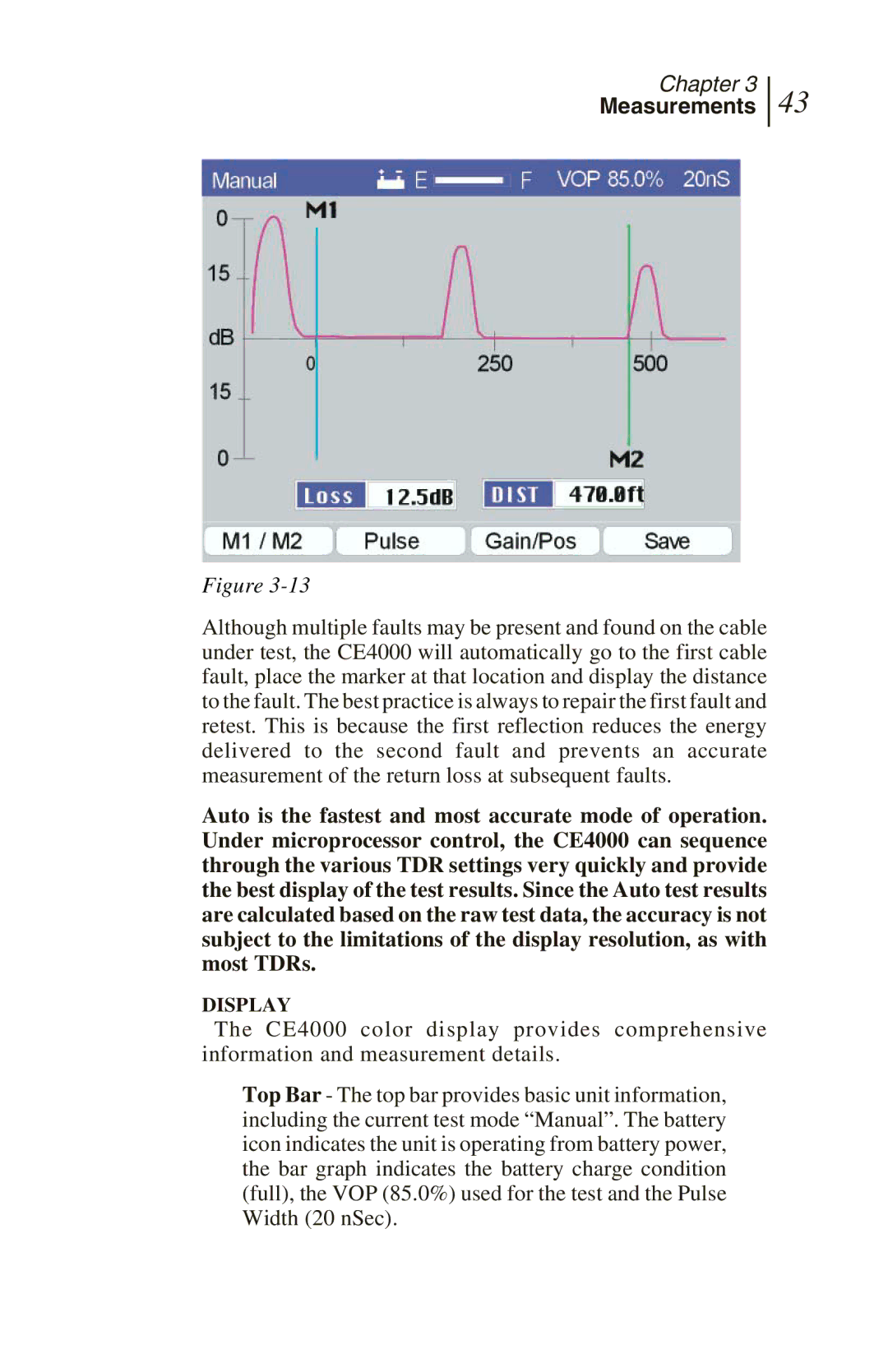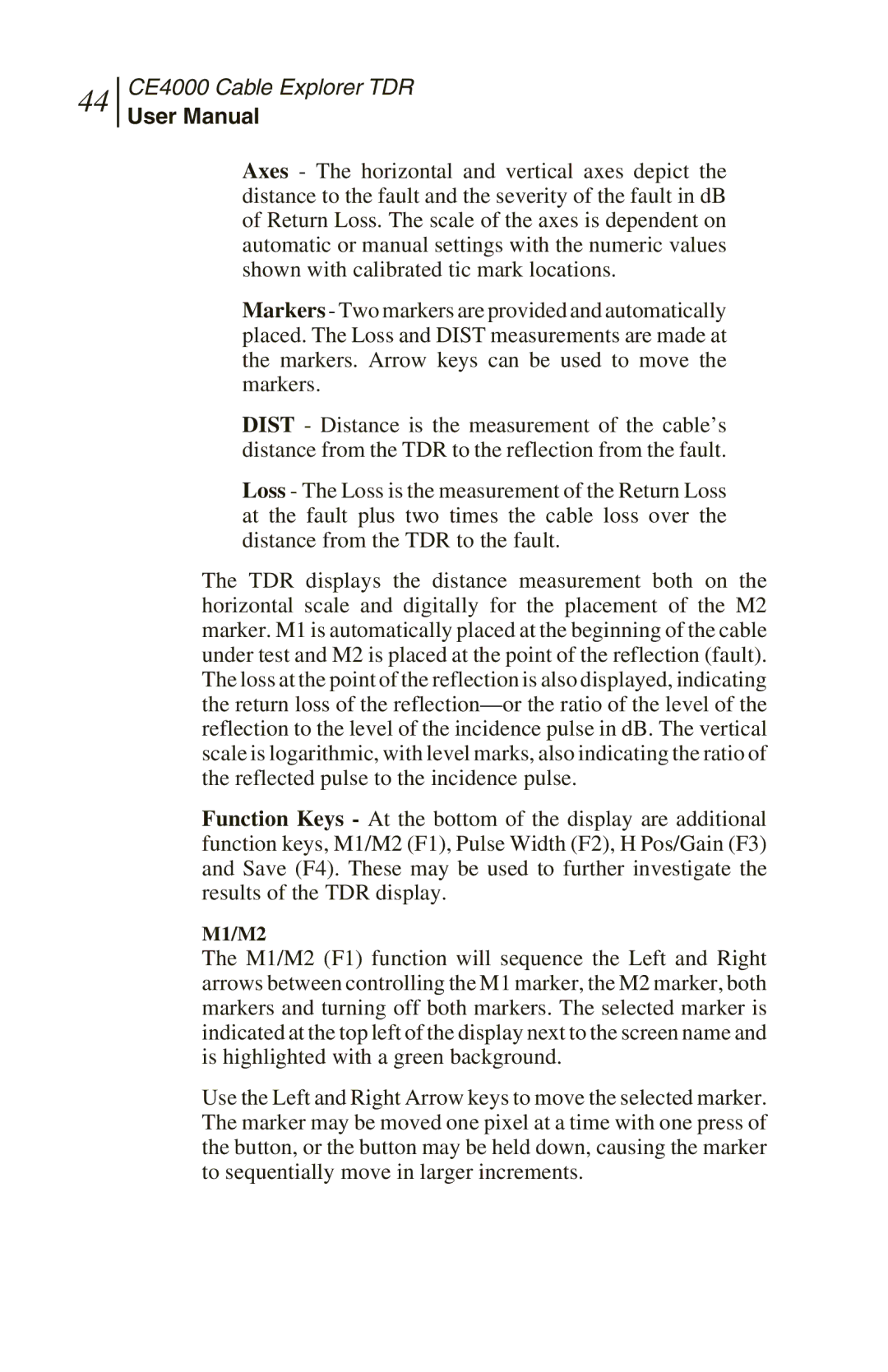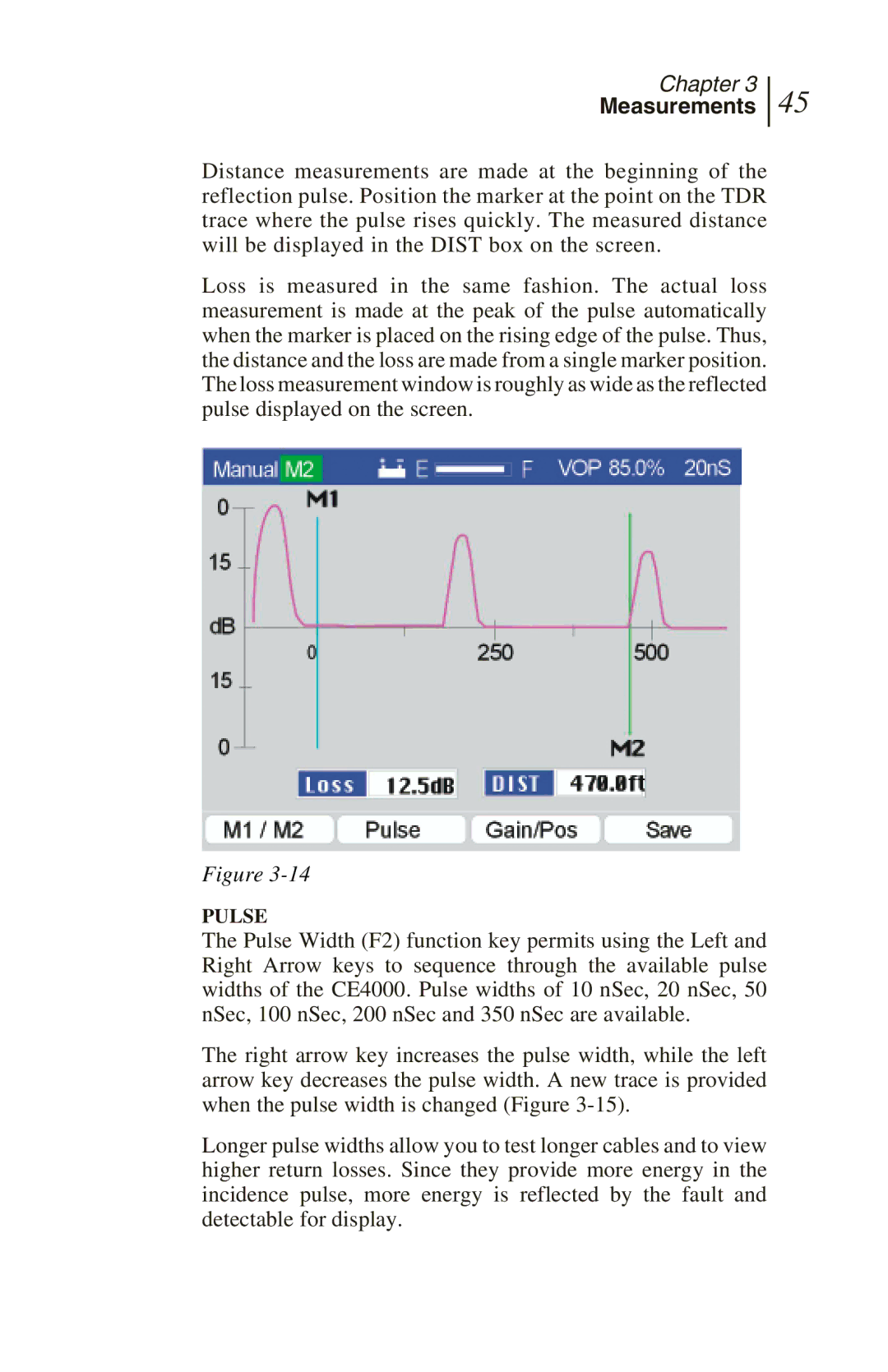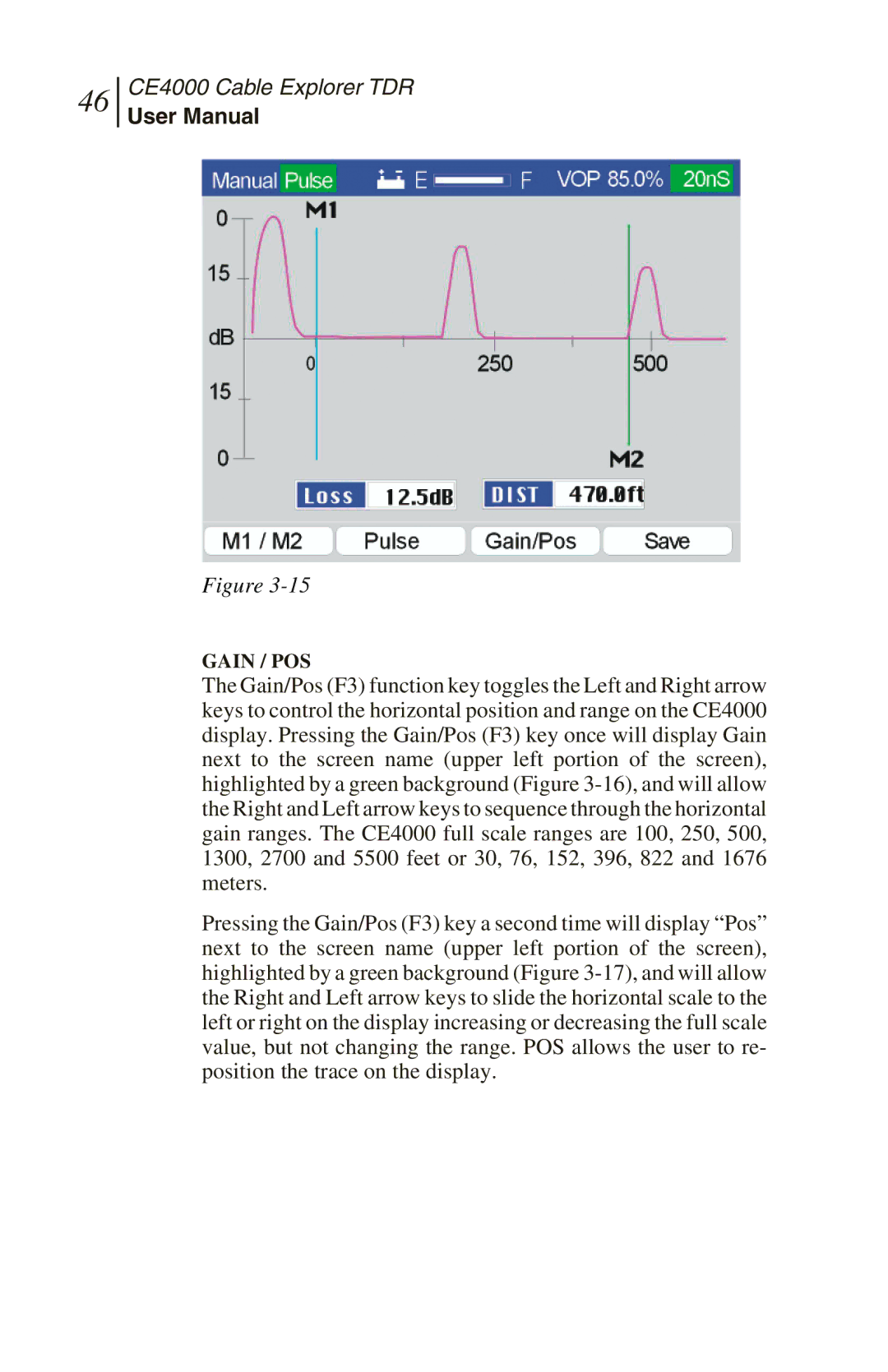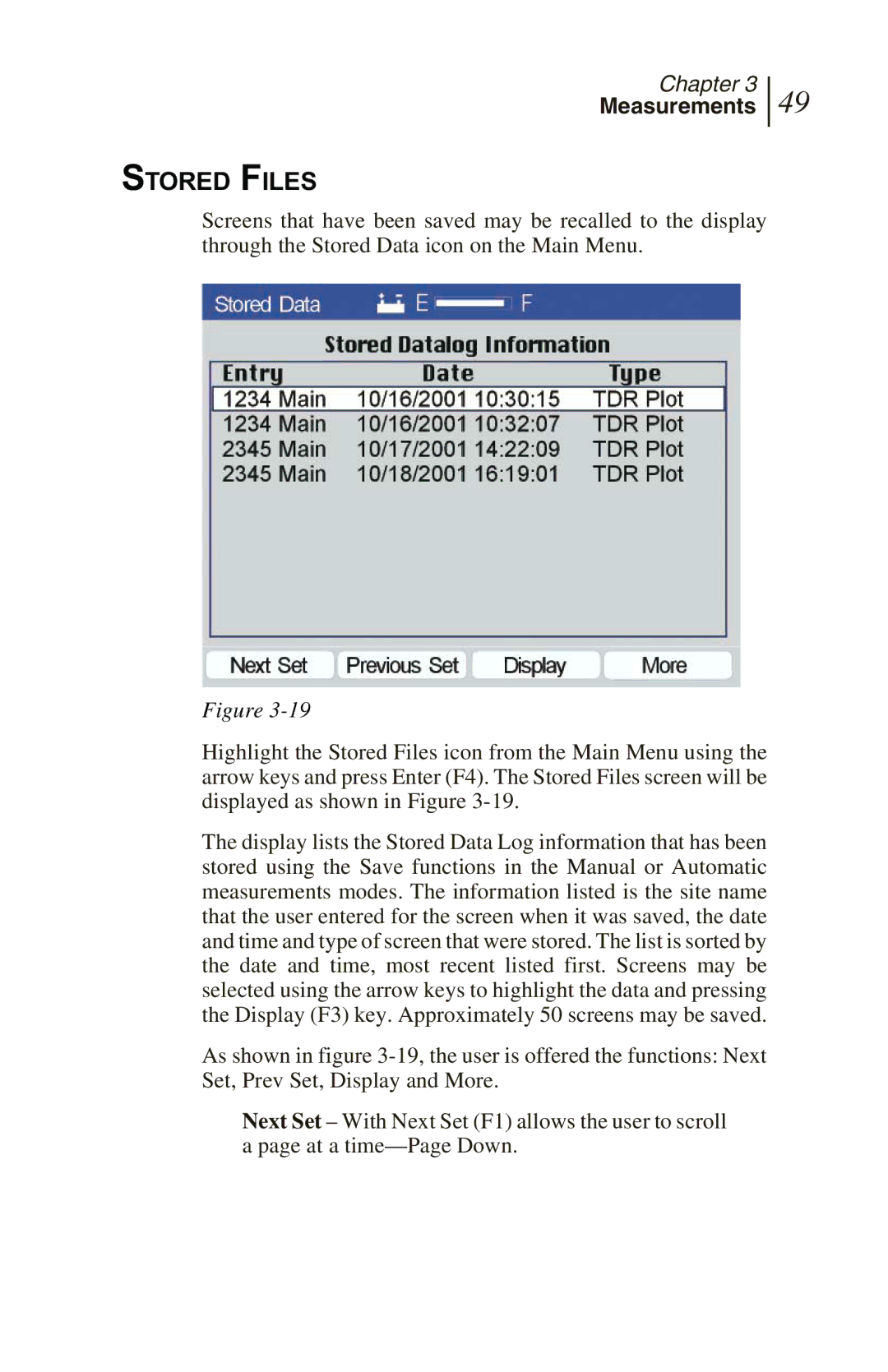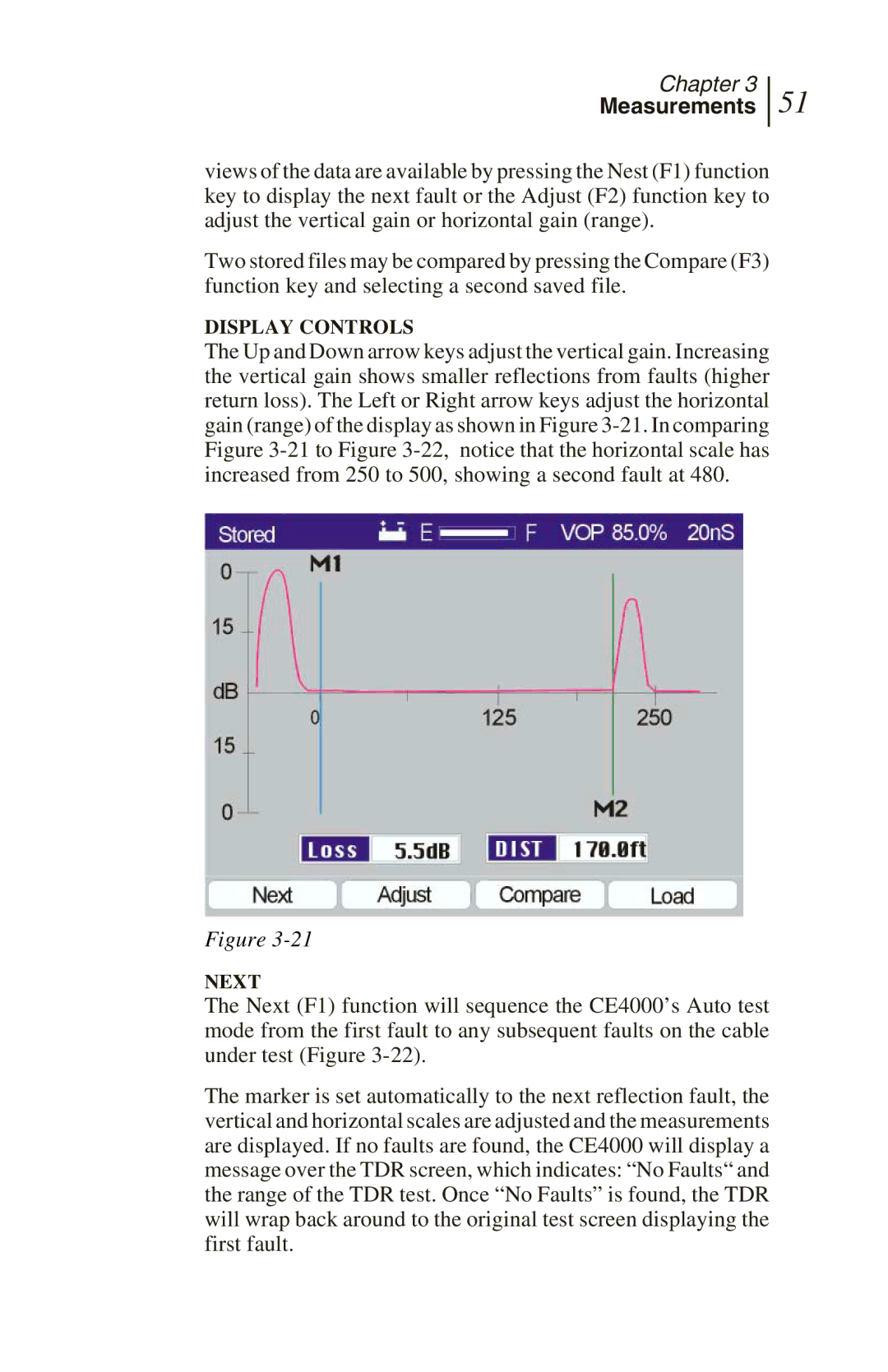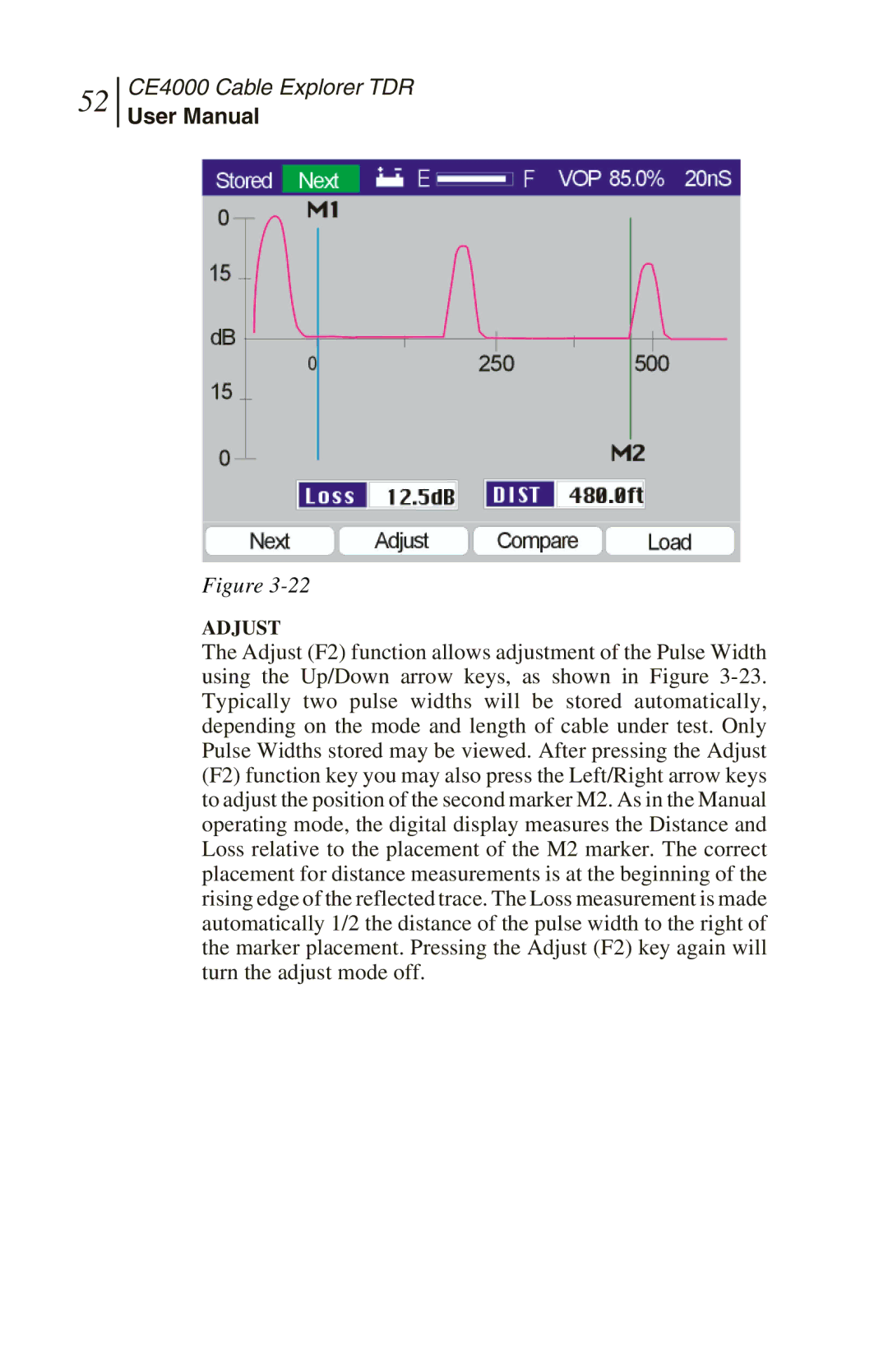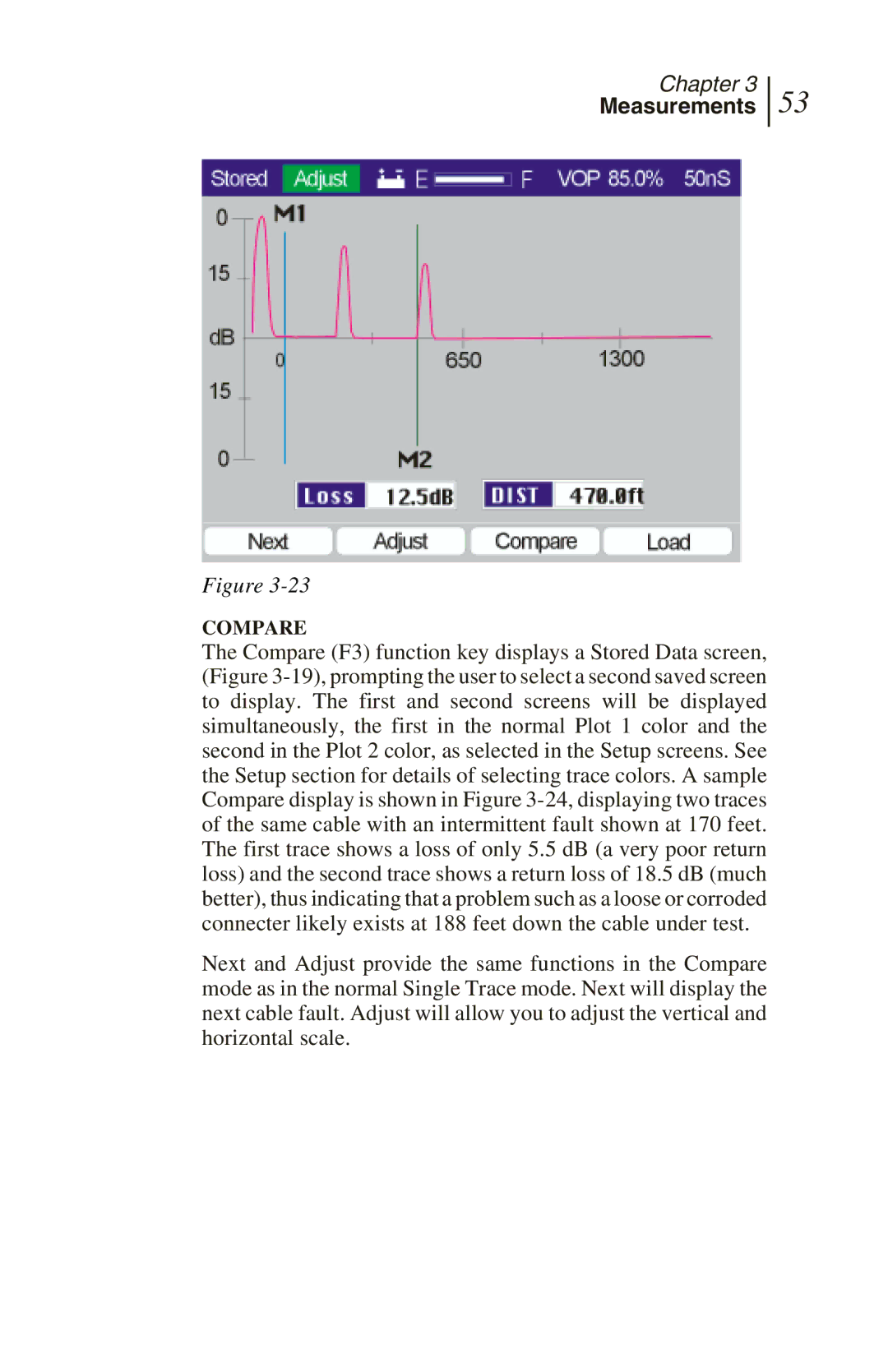
Figure 3-2
Short pulse widths are advantageous for two reasons. First, the time period of the pulse prevents seeing reflections that occur in the time period between the rise and fall of the incidence pulse. Secondly, multiple reflections that are close together are seen as a single fault because the time period of the reflected pulse obscures any other reflections between the time of the rise and fall of the reflected pulse.
The distance associated with the time during the rise and fall of the incidence pulse is called the “dead zone”—an area where the TDR cannot make measurements. The CE4000 eliminates this dead zone by incorporating a built in delay line, which effectively moves the “0 distance” to the right of the incidence pulse allowing measurements right up to the connector on the CE4000.
Figure 3-2 shows a typical CE4000 TDR display. The incidence pulse is shown to the left of the display (just left of the “0” on the horizontal distance scale). The reflection pulse can be seen just below the 200-foot mark on the horizontal scale.
The CE4000 offers pulse widths of 10 nSec, 20 nSec, 50 nSec, 100 nSec, 200 nSec, and 350 nSec. Faults at longer distances may be masked by the cable loss. Longer pulses represent more

